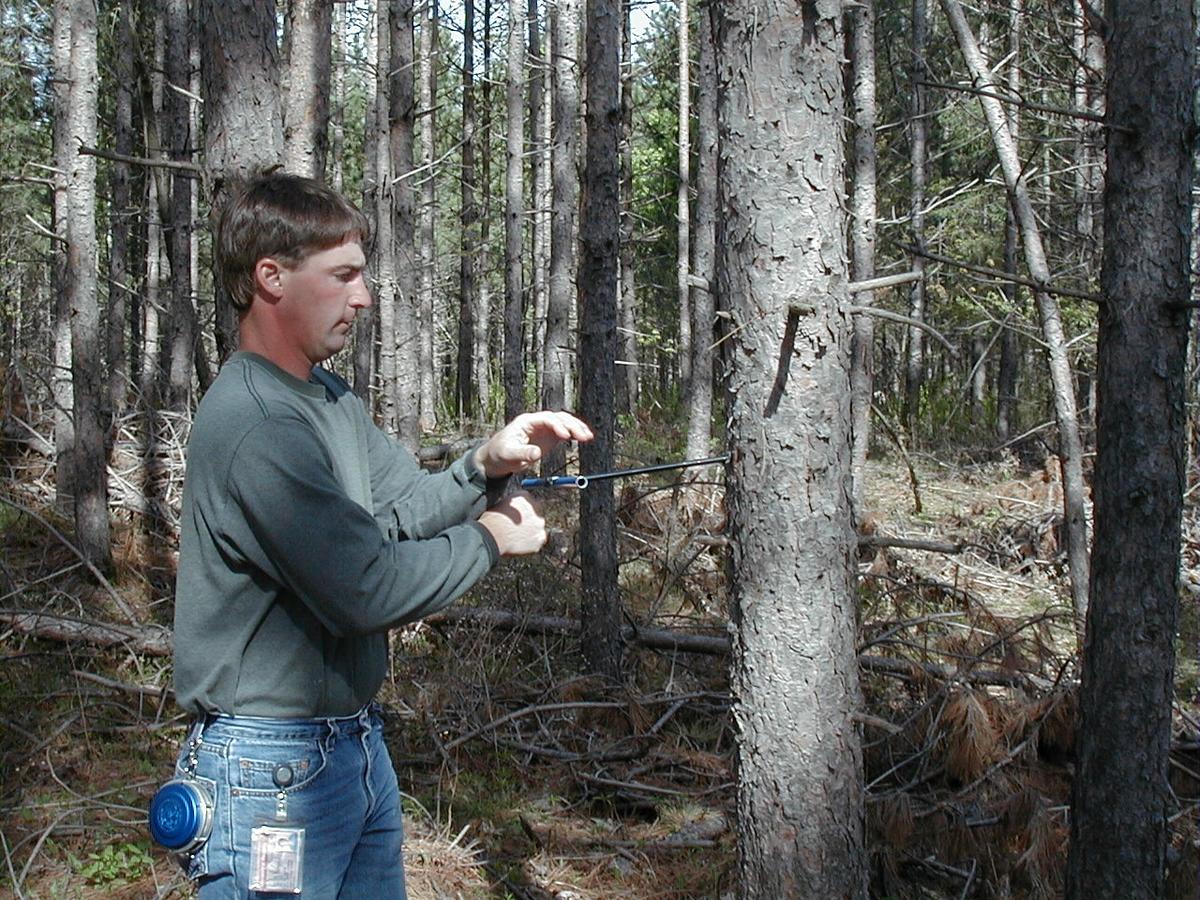With some 630,000 acres of red pine in Minnesota supporting a robust wood products industry, managing our forest resources right will help sustain them for future generations.
To do that, NRRI forest experts asked the state’s silviculture managers what they need to make the most of this wood resource.
The answer: A handbook that addresses the critical early growth years of this versatile tree species. That lays out all the options for managing the landscape for biodiversity and economic value. That pulls together past research with current findings in an easy-to-follow format.
And that is exactly what NRRI published in June, released for distribution by the Minnesota Department of Natural Resources.
“One of the big concerns with red pine management is waiting too long to thin it,” explained Dan Buchman, co-author on the project with NRRI colleague Bill Berguson. “Then you have a tree stand that’s susceptible to wind blow-downs, snow damage and insects. This handbook gets managers around that situation with early thinning techniques.”
The timing couldn’t be better. Minnesota has a lot of red pine acreage coming upon their first thinning. To do it most cost effectively, the handbook tells the harvesters to go after the large diameter trees that have the highest value. This is in contrast to previous strategies which took out the smallest trees first to let the larger trees grow.
Earlier studies on this technique by Robert Buckman, a researcher with the U.S. Forest Service from 1953 to 1986, found that there’s no difference in growth and that it increases the value of the harvest. Buckman’s research lays the groundwork for red pine knowledge in the Upper Midwest lake states.
Red pine is a very versatile tree species that can be grown for a variety of products. It also grows without much encouragement.
“I could do nothing to a red pine stand and 100 years from now it would give us the same volume if it had been thinned,” said Buchman. “But an unthinned stand would look very different. The trees would be very tall and thin; not very high value. Our techniques will help deliver a steady flow of products out of young red pine stands.”
The goal is to have properly managed working forests that are healthier and less of a fire risk than unmanaged, overgrown forests. By opening the canopy and allowing for native understory plants, red pine regrowth is already on its way when the stands are harvested.
Download the complete handbook
